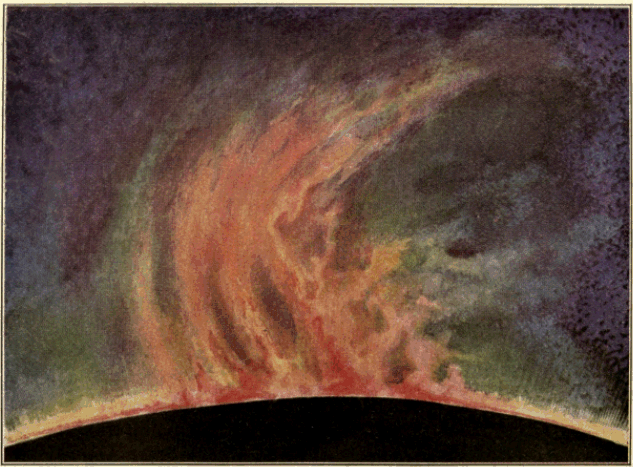

An Active Prominence of the Sun, 140,000 Miles High,photographed July 9, 1917.
ASTRONOMY
The Science of the Heavenly Bodies
BY
DAVID TODD
Director Emeritus, Amherst College Observatory

NEW YORK AND LONDON
HARPER & BROTHERS
PUBLISHERS MCMXXII
By P. F. Collier & Son Company
MANUFACTURED IN U. S. A.
PREFACE
Sir William Rowan Hamilton, the eminentmathematician of Dublin, has, of all writersancient and modern, most fittingly characterizedthe ideal science of astronomy as man's golden chainconnecting the heavens to the earth, by which we"learn the language and interpret the oracles of theuniverse."
The oldest of the sciences, astronomy is also thebroadest in its relations to human knowledge andthe interests of mankind. Many are the cognatesciences upon which the noble structure of astronomyhas been erected: foremost of all, geometry and thehigher mathematics, which tell us of motions, magnitudesand distances; physics and chemistry, ofthe origin, nature, and destinies of planets, sun, andstar; meteorology, of the circulation of their atmospheres;geology, of the structure of the moon'ssurface; mineralogy, of the constitution of meteorites;while, if we attack, even elementally, thefascinating, though perhaps forever unsolvable,problem of life in other worlds, the astronomer mustinvoke all the resources that his fellow biologistsand their many-sided science can afford him.
The progress of astronomy from age to age hasbeen far from uniform—rather by leaps and bounds:from the earliest epoch when man's planet earthwas the center about which the stupendous cosmoswheeled, for whom it was created, and for whoseedification it was maintained—down to the modern[4]age whose discoveries have ascertained that evenour stellar universe, the vast region of the solardomain, is but one of the thousands of island universesthat tenant the inconceivable immensities ofspace.
Such results have been attainable only throughthe successful construction and operation of monstertelescopes that bring to the eye and visualize onphotographic plates the faintest of celestial objectswhich were the despair of astronomers only a fewyears ago.
But the end is not yet; astronomy to-day is butpassing from infancy to youth. And with new andgreater telescopes, with new photographic processesof higher sensitivity, with the help of modern inventionin overcoming the obstacle of the air—thatconstant foe of the astronomer—who will presumeto set down any li